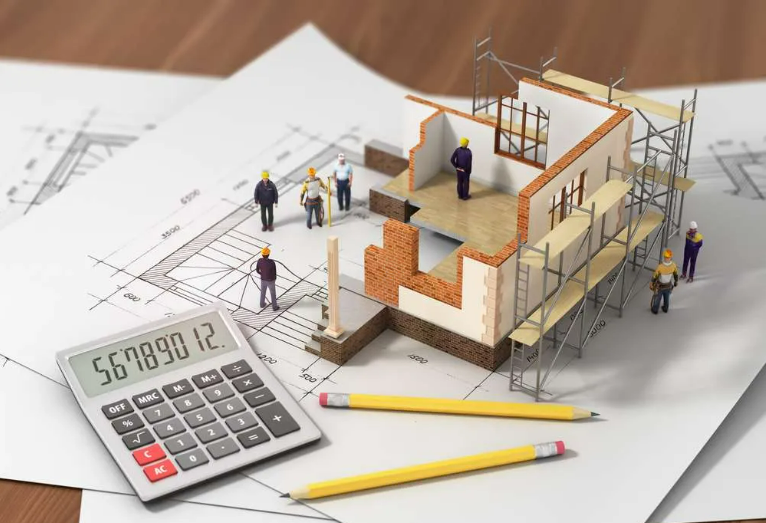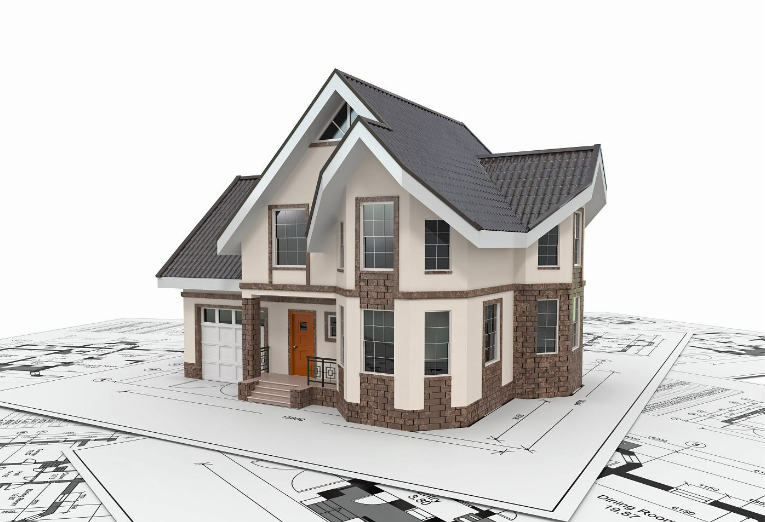All You Need to Know about Construction Loans

If you’re struggling to find the perfect home, building a house could be a great alternative. However, financing a construction project differs from securing a loan for an existing property. Instead of a traditional mortgage, you’ll need a construction loan (or construction mortgage). Here’s what you should know about construction loans.
What are construction loans?
Construction loans are designed to finance the building of a residential home, covering everything from land acquisition to the completed structure. The most common types include standalone construction loans, which are short-term loans typically lasting about a year and only cover the construction phase, and construction-to-permanent loans, which convert into a mortgage once the building is finished. Borrowers with a standalone construction loan often obtain a separate mortgage to pay it off when the loan term ends.
What costs are covered by a construction loan?
A construction loan can be used to cover expenses such as:
- The land or lot
- Contractor labor
- Building materials
- Permits
As the name suggests, construction loans finance the costs associated with building a home, including contractor fees and permits. They can also be used to purchase the land or property lot.
However, keep in mind that construction loans do not cover design costs. If you plan to hire an architect or interior designer, you’ll need to pay for those services out of pocket.
How do construction loans work?
The typical term for a construction loan is usually one year or less, within which you must complete the project. Due to the short timeframe and the reliance on the project’s progress, you or your general contractor will need to provide the lender with a construction timeline, detailed plans, and a realistic budget. Based on this information, the lender will disburse funds at different stages of the project, often directly to the contractor.
Construction loans vs. traditional mortgages
In addition to cost and repayment timelines, there are several key differences between construction loans and traditional mortgages:
- Funds Distribution: Unlike mortgages or home equity loans, which provide a lump-sum payment, construction loans disburse funds in stages as the building progresses. These draws occur upon reaching significant milestones, such as laying the foundation or starting the framing.
- Repayments: With a mortgage, you begin repaying both principal and interest immediately. In contrast, construction loans typically require only interest payments during the construction phase. Borrowers are obligated to pay interest only on the funds drawn up to that point until construction is finished.
- Inspection/Appraiser Involvement: During the construction process, lenders often have appraisers or inspectors assess the progress at various stages. As each phase is approved, additional funds are released to the contractor in a series of draws, usually involving four to six inspections throughout the project.
- Requirements: Similar to mortgages, construction loan borrowers must demonstrate financial stability and make a down payment. However, since there’s no existing property to appraise, lenders also require a comprehensive construction plan detailing the project to determine the loan amount.
- Interest Rates: Interest rates for construction loans are generally higher than those for traditional mortgages because there’s no existing structure to serve as collateral. This increased risk for lenders typically results in higher rates.
Types of construction loans
There are several types of construction loans available, each tailored to meet different financial needs.
Construction-to-permanent loan
With a construction-to-permanent loan, once your house is finished and you move in, the loan transitions into a traditional mortgage. You can typically select a loan term of 15 to 30 years and choose between a fixed or adjustable rate.
During the construction phase, you are only responsible for interest payments on the amounts drawn as they are disbursed. After the conversion, your payments will include both principal and interest, similar to any standard mortgage.
While many construction loans are conventional, fully privately funded options, there are government-backed alternatives as well. For instance, an FHA construction-to-permanent loan offers more flexible approval standards, which can benefit certain borrowers, while VA construction loans are available for eligible veterans.
One of the major advantages of the construction-to-permanent approach is the single set of closing costs, which helps minimize overall expenses. “There’s a one-time closing, so you avoid duplicate settlement fees,” explains Janet Bossi, senior vice president at OceanFirst Bank in New Jersey.
Construction-only loan
A construction-only loan provides the necessary funds to build a home, but the borrower must repay the loan in full at maturity, typically within a year. This debt can be settled either in cash or by securing a mortgage to pay it off.
The advantage of this approach is that you may obtain better terms with the new mortgage since construction loans are generally more expensive (see “Construction Loan Rates” below). However, construction-only loans can ultimately be more costly than construction-to-permanent loans, as they involve two separate transactions and require two sets of closing costs, which can amount to thousands of dollars. Additionally, you’ll need to invest time and effort in shopping for a mortgage.
Another important factor to consider is that if your financial situation deteriorates during construction, you may not qualify for a mortgage later, which could prevent you from moving into your new home.
Renovation loan
If you’re looking to upgrade an existing home rather than build one, you have several home renovation loan options to consider, depending on the project’s cost.
“For projects under $20,000, homeowners might consider a personal loan or using a credit card for financing,” says Steve Kaminski, head of U.S. Residential Lending at TD Bank. “For renovations starting around $25,000, a home equity loan or line of credit could be suitable, especially if there’s built-up equity in the home.”
In a low mortgage rate environment, a cash-out refinance is another viable option. This involves taking out a new mortgage for more than the current loan amount, allowing the homeowner to receive the difference as a lump sum. However, as interest rates rise, cash-out refinances may become less attractive.
With refinancing or home equity loans, lenders typically don’t require homeowners to disclose how they will use the funds. Homeowners are responsible for managing the budget, planning, and payments. In contrast, some renovation loans may involve the lender evaluating the builder, reviewing the budget, and overseeing the draw schedule.
Owner-builder construction loan
Owner-builder loans are either construction-to-permanent or construction-only loans where the borrower also takes on the role of the home builder.
Most lenders are hesitant to let borrowers serve as their own builders due to the complexities involved in home construction and the expertise needed to meet building codes. Typically, lenders will permit this arrangement only if the borrower is a licensed builder.
End loan
An end loan refers to the mortgage that the homeowner takes out once the property is completed, according to Kaminski. You use a construction loan during the building phase, and once construction is finished, you repay that loan and transition to a standard mortgage, known as the end loan.
“Not all lenders provide a construction-to-permanent loan, which allows for a single closing,” notes Kaminski. “Some lenders require a second closing to finalize the transition to the permanent mortgage or end loan.”
Construction loan rates

Unlike traditional mortgages, which typically have fixed rates, construction loans usually feature variable rates that fluctuate with the prime rate. This means your monthly payment can change based on rate adjustments.
Construction loan rates are generally higher than those for traditional mortgages. This is partly because construction loans are unsecured, lacking collateral. In a traditional mortgage, your home serves as collateral, allowing the lender to repossess it if you default. However, with a construction loan, lenders do not have that option, leading them to perceive these loans as higher risk.
On average, you can expect construction loan interest rates to be about 1 percentage point higher than traditional mortgage rates.
Construction loan requirements
Companies that offer construction loans typically require borrowers to:
- Be Financially Stable: You’ll need a low debt-to-income ratio and proof of sufficient income to repay the loan, generally requiring a credit score of at least 680.
- Make a Down Payment: Similar to most mortgages, a down payment is necessary when applying for the loan. The required amount varies by lender and the total construction cost, but construction loans usually require at least 20 percent down.
- Have a Construction Plan: Lenders expect you to collaborate with a reputable construction company and architect to develop a detailed plan and timeline.
- Obtain a Home Appraisal: Whether you’re securing a construction-only loan or a construction-to-permanent loan, lenders want assurance that the home will be worth the amount they’re lending. An appraiser will evaluate the blueprints, the lot’s value, and other relevant details to provide an accurate assessment. For construction-to-permanent loans, the completed home will act as collateral for the mortgage.
How to get a construction loan
Getting approval for a construction loan may resemble the mortgage process, but starting a brand-new home involves a bit more complexity. Generally, you should follow these four steps:
- Find a Licensed Builder: Lenders want to ensure your chosen builder has the necessary expertise to complete the home. Ask friends who have built homes for recommendations, or consult the NAHB’s directory of local home builders’ associations to find contractors in your area. Just as you would compare different existing homes, it’s wise to evaluate multiple builders to find the best balance of price and experience for your needs.
- Locate a Construction Loan Lender: Reach out to several experienced construction loan lenders to learn about their specific programs and procedures. If you’re having difficulty finding a lender, consider smaller regional banks or credit unions. Compare rates, terms, and down payment requirements to secure the best deal for your situation.
- Gather Your Documents: Lenders typically require a contract with your builder that outlines detailed pricing and plans for the project. Be prepared to provide references for your builder and any necessary proof of their credentials. You’ll also need many of the same financial documents required for a traditional mortgage, such as pay stubs and tax statements, to demonstrate your income, assets, and employment.
- Get Preapproved: Securing preapproval for a construction loan can give you a clearer idea of how much you can borrow for your project. This step is crucial to avoid investing in architectural plans or blueprints for a home that exceeds your budget.
- Obtain Homeowners Insurance: Although you may not be living in the home yet, your lender will likely require a prepaid homeowners insurance policy that includes builder’s risk coverage. This protects you in case something happens during construction, such as fire or vandalism to the partially built property.
